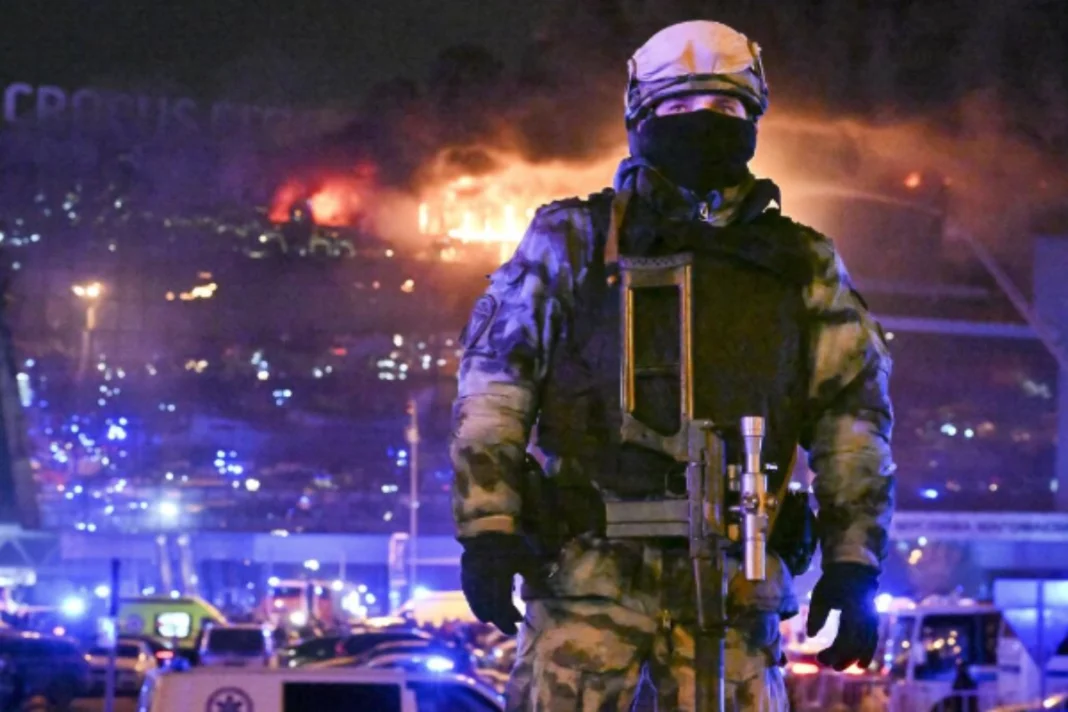Moscow Attack: Following the devastating shooting at a Moscow concert, which shocked the globe, the Islamic State of Iraq and Syria-Khorasan (ISIS-K), sometimes referred to as ISKP or ISK, came into sharp spotlight as the group took credit for the terror act at Crocus City Hall.
Death Toll and Conflicting Reports
At least 82 people are said to have died in the attack, which was carried out by guys dressed in camouflage, according to independent online news source The Spectator Index. However, as of right now, the Russian Embassy in India has acknowledged 60 dead.
The authorities of the Islamic State in Syria and Iraq have recognised the ISIS-K as an affiliate of the Islamic State movement in Afghanistan. According to Business Standard, the group continues to represent a danger to American and allies’ interests in South and Central Asia.
Understanding ISIS-K
As per Business Standard, the ‘K’ in ISIS-K stands for Khorasan, signifying the Islamic State’s hold in Pakistan and Afghanistan, where US forces have been involved in conflicts with the Taliban and al-Qaida fighters since 2001. According to the BBC, they are the most dangerous and radical terrorist group in Afghanistan.
Emergence During IS’s Peak in Iraq and Syria
Founded in January 2015, during the height of IS’s power in Iraq and Syria, IS-K enlists people from both Afghanistan and Pakistan. It especially attracts disgruntled Afghan Taliban members who think their own organisation isn’t radical enough, the BBC reports.
The ISIS-K, which was founded by former members of the Islamic Movement of Uzbekistan, the Afghan Taliban, and the Pakistani Taliban, is made up of a number of extremist groups dedicated to spreading the radical doctrine of the Islamic State and helping ISIS take control of Afghanistan, according to Business Standard. A distinct Pakistan branch was announced by IS-K in May 2019.
Understanding Khorasan
A historical territory that included portions of modern-day Afghanistan and Pakistan is referred to as “Khorasan”. When IS-K was at its strongest, it had about 3,000 fighters. Nonetheless, major losses have resulted from ongoing conflicts with the Taliban, the US, and Afghan government forces.
Past Attacks By ISIS-K
Attacks by IS-K have been directed at Afghan security personnel, lawmakers, ministries, Sikhs and Shia Muslims, as well as US and NATO forces and foreign humanitarian organisations. They are notorious for their violent crimes; they have attacked hospitals, schools for females, and even a maternity unit where it is said that nurses and expectant mothers were shot to death.
Unlike the Taliban, which is largely focused on home affairs, IS-K is part of the larger IS network and seeks to carry out attacks against international, Western, and humanitarian targets worldwide. Since January 2017, there have been about 250 conflicts between ISIS-K and security forces from the US, Afghanistan, and Pakistan, in addition to about 100 strikes directed at civilians in Afghanistan and Pakistan.
Potential Terror Assault in Moscow
The US has alerted the New York Times of a potential terror assault in Moscow. The performance was one of the proposed targets of an attack that US intelligence said was planned. Even the Kremlin officials and US individuals living in Russia received a similar advisory from the US.
Experts cited by news agency Reuters claimed that the attack was motivated by ISIS-K’s long-standing hostility to Russian President Vladimir Putin. According to Colin Clarke of the Soufan Centre, a Washington-based research organisation, “ISIS-K has directed its focus towards Russia in recent years, frequently denouncing Putin in its propaganda,” as reported by Reuters.
ISIS-K’s Perception of Russia
ISIS-K sees Russia as involved in acts that persecute Muslims, according to Michael Kugelman of the Wilson Centre in Washington, and a sizable portion of its membership are militants from Central Asia who harbour grudges against Moscow. It is evident that ISIS-K is seeking a rebirth, and focusing on countries other than Afghanistan will enable it to attract international attention.


